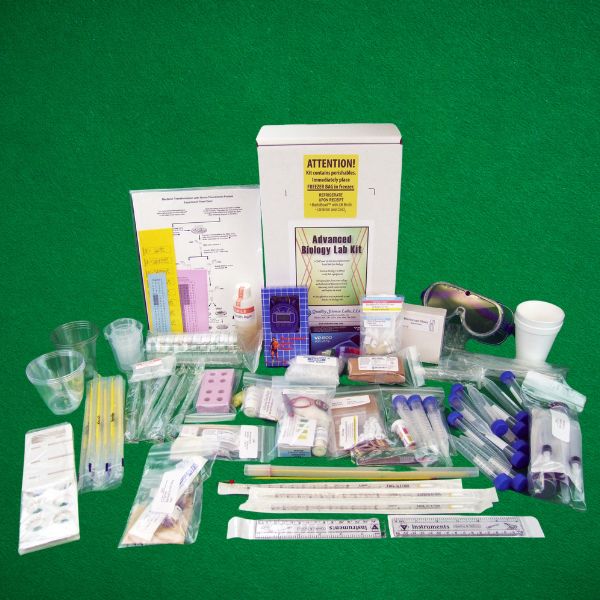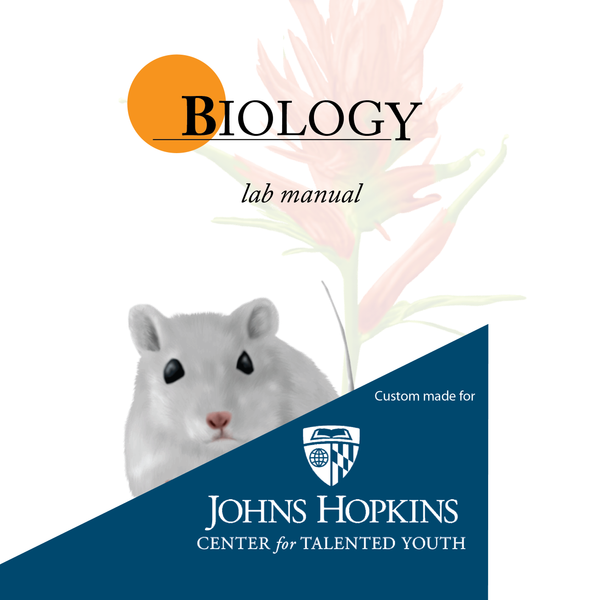Quality Science Labs, LLC offers innovative laboratory curricula and corresponding kits. Our kits can turn the kitchen into a homeschool laboratory or enhance the lab experience for schools with limited resources.
QSL Biology Lab Kit
Description
QSL Biology Lab Kit
The QSL Biology Lab Kit provides the hands-on laboratory component of a biology science course. It is coordinated with: A Beka, ACE Ministries, Alpha Omega, Apologia (Wile), BJU Press, Christian Light, Glencoe Science, and Prentice Hall biology texts.
The QSL Biology Lab Kit was designed to make teaching and preparation very convenient. Use with adult supervision, for ages 14 and up.
The kit includes the 275 page QSL Biology Lab Manual which explains each experiment in detail. Included in the kit is virtually everything needed except perishables and a microscope.
QSL Biology experiments:
1. Microscope: Structure and care
2. Microscope: Magnification
3. Preparing a Slide Using a Wet Mount
4. Microscope Drawings
5. Cell Lab: Prepare and view a Plant Cell
6. Cell Lab: Prepare and View Parts of a Plant Cell
7. Cell Lab: Prepare and View Animal Cells and Compare them to Plant Cells
8. Cell Lab: Observing Chloroplasts and Cytoplasmic Streaming
9. Cell Lab: A Selectively Permeable Membrane
10. Mitosis Lab (Note: This lab will take more time than most.)
11. Bacteria Lab: Part 1 - Forms of Bacteria
12. Bacteria Lab: Part 2 - Bacteria around us
13. Classification
14. Protista Lab
15. Fungus Lab: Prepare and View Squash Fungus
16. Fungus Lab: Prepare and View Mushroom Structures
17. Fungus Lab: Prepare and View Yeast
18. Plant Lab: Monocot and Dicot Root, Leaf, and Stem
19. Plant Lab: The Parts of a Flower
20. Plant Lab: Internal Structures of Monocots and Dicots
21. Plant Lab: Plant Leaves
22. Dissection: Worm - Activity I - External, Activity II - Internal
23. Dissection: Crayfish - Activity I - External, Activity II - Internal
24. Dissection: Grasshopper - Activity I - External, Activity II - Internal
25. Dissection: Fish - Activity I - External, Activity II - Internal
26. Dissection: Frog -Activity I - External, Activity II - Internal
27. Dissection: Cow Eye - Activity I - External, Activity II - Internal
28. Dissection: Fetal Pig - Activity I - External, Activity II - Internal
Equipment:
10X magnifying glass
150 ml beaker
Blank slides
Concave slides
Cotton swabs
Cork
Cover slips
Dialysis tubing
Dissection kit
Dissection tray (plastic reusable)
Graduated pipette
Iodine stain
Lens paper
Liquid starch
Methylene blue
Pencil
Red food coloring
Rubber bands
Slide case
Tie string
Toothpicks
Yeast
Prepared Slides:
3 types of bacteria
Euglena
Horse ascaris
Onion root tip
Paramecium
Monocot / dicot stem
Preserved specimens:
Cow eye
Crayfish
Earthworm
Fetal pig
Fish (perch)
Frog
Grasshopper
Related Products
Advanced Biology Kit
- $323.75
CTY Biology Course Kit
- $142.66
- $121.26
Kolbe Custom Biology Lab Kit
- $309.51






